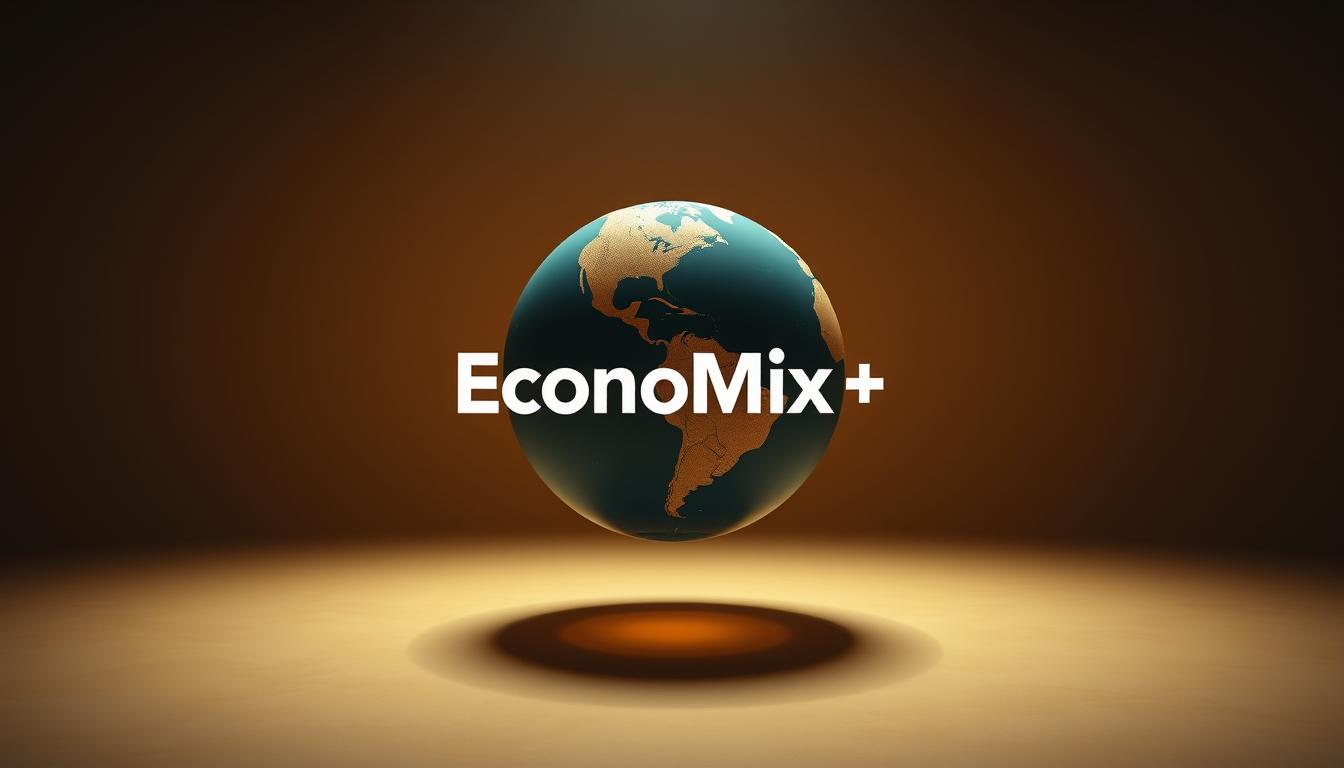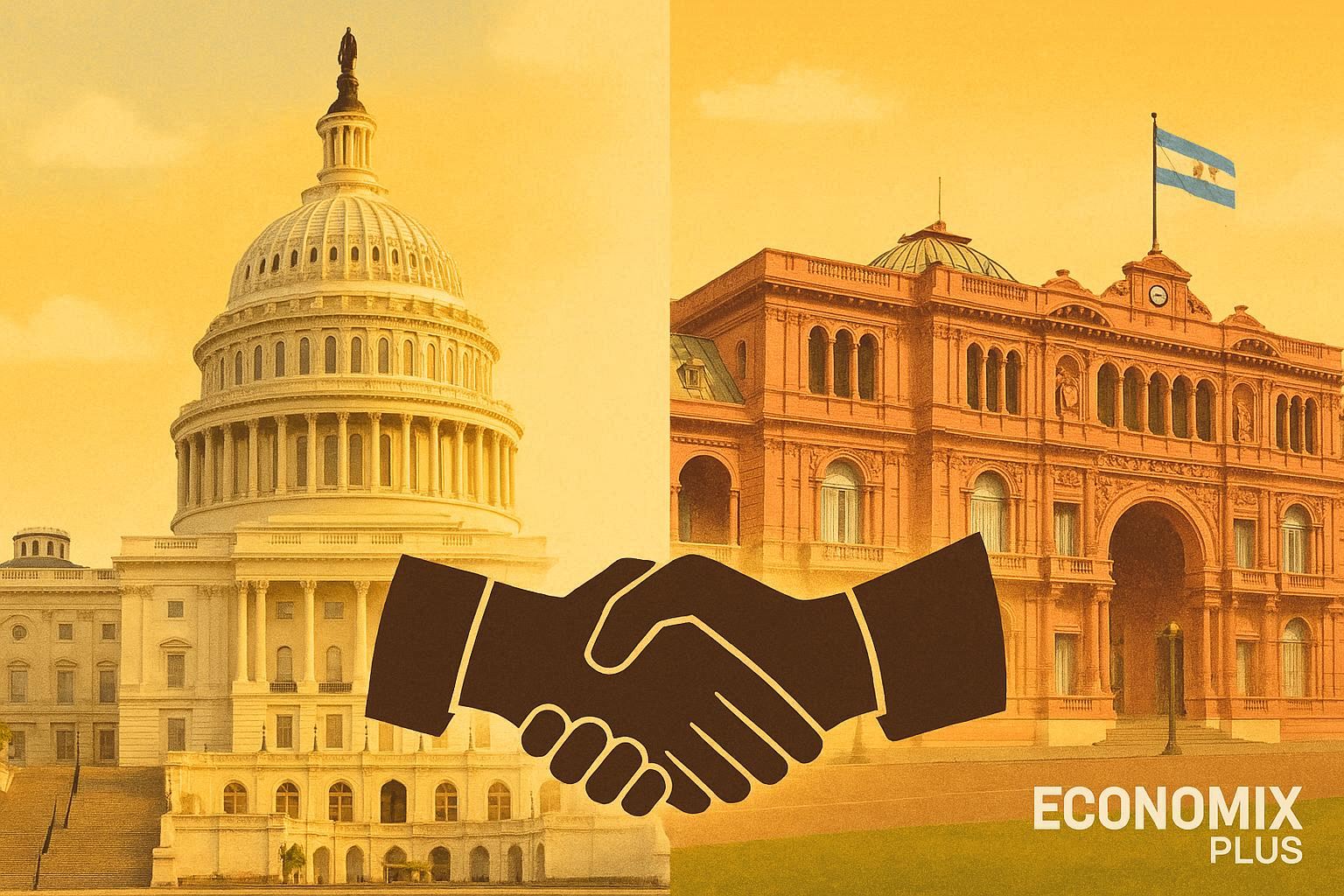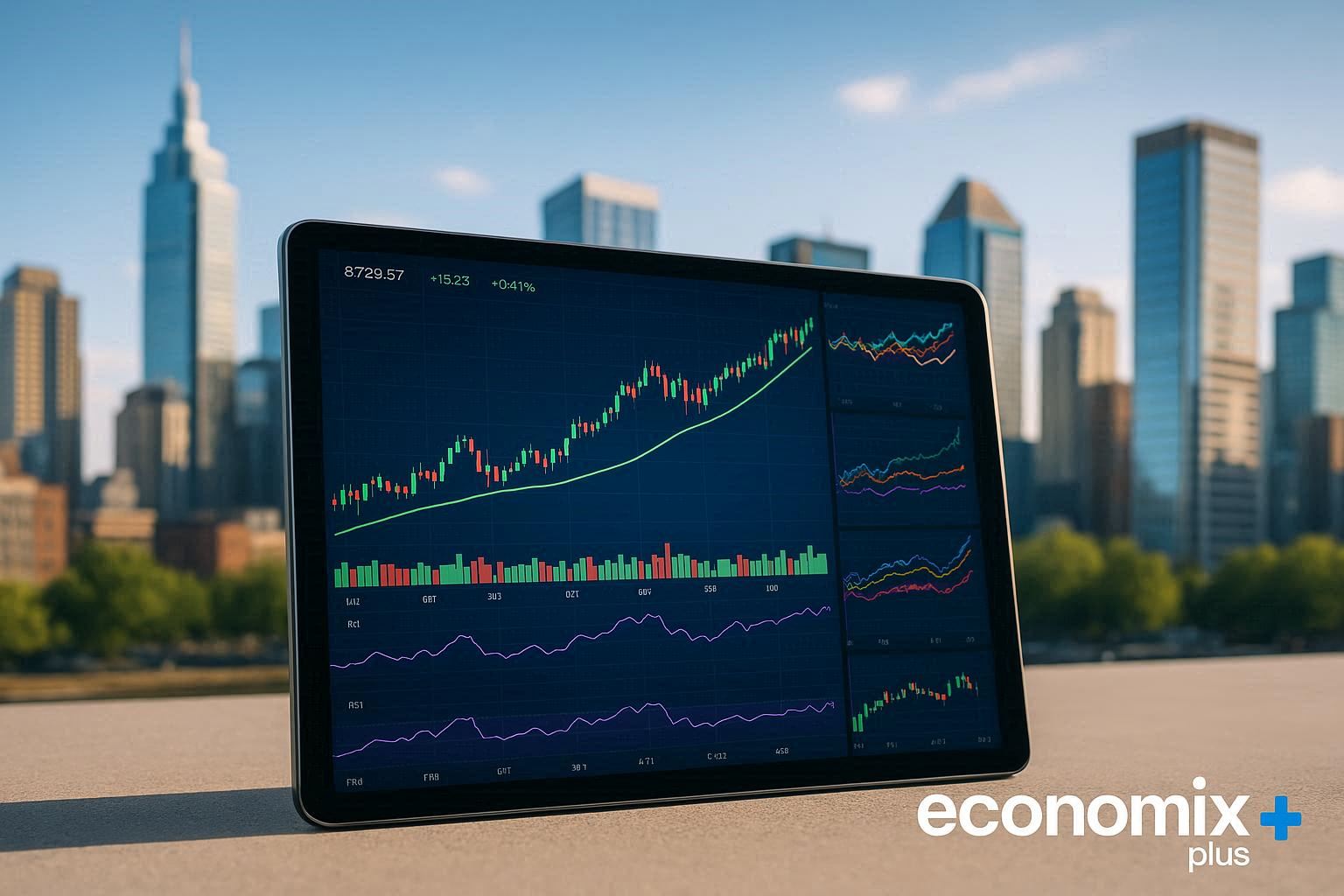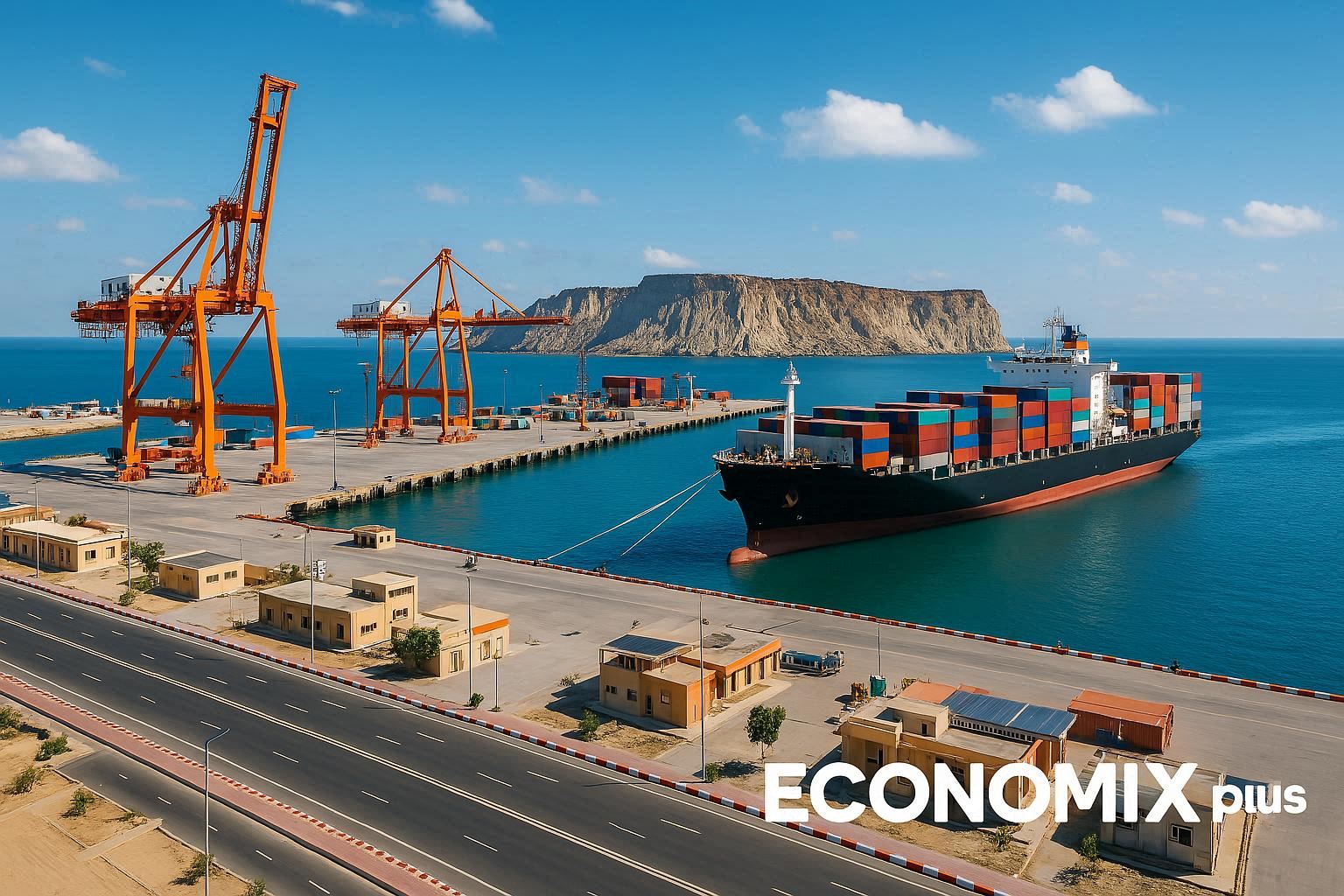In 2000, Ecuador made a bold move by adopting the US dollar as its official currency, a decision that significantly impacted its economic stability. This drastic measure was taken to address a severe financial crisis that had plagued the country throughout the late 1990s.
The switch from the sucre to the USD marked a pivotal moment in Latin America‘s economic history, raising questions about the effects of dollarization on inflation and overall economic health.
Key Takeaways
- The adoption of the US dollar was a response to a severe economic crisis in Ecuador.
- Dollarization has had multifaceted impacts on Ecuador’s economy, including effects on inflation and trade competitiveness.
- The decision has brought both benefits and challenges to Ecuador’s economic stability.
- The case of Ecuador provides valuable insights into the complex relationship between currency policy and economic stability.
- Ecuador’s experience offers lessons for other developing economies considering similar monetary approaches.
The Economic Crisis That Led to Dollarization
A catastrophic economic crisis hit Ecuador in the late 1990s, paving the way for dollarization. The country faced severe financial turmoil, characterized by a drastic devaluation of its national currency, the sucre.
Ecuador’s Financial Turmoil in the Late 1990s
The late 1990s were marked by a significant economic downturn in Ecuador. The sucre experienced a catastrophic devaluation, losing approximately 65% of its value in 1999 alone. This drastic decline in currency value led to a massive capital flight as Ecuadorians sought to protect their savings by converting them to more stable foreign currencies.
The inflation rate soared, reaching an alarming 96.1% in 2000. This hyperinflation devastated the purchasing power of ordinary citizens, making basic economic planning virtually impossible.
The Collapse of the Sucre
The collapse of the sucre was a pivotal event in Ecuador’s economic crisis. By the end of 1999, 56% of bank deposits and 66.5% of bank loans were denominated in US dollars, indicating a de facto dollarization. The interest rates on sucre-denominated loans skyrocketed to unsustainable levels, further accelerating the adoption of the dollar.
| Indicator | 1999 | 2000 |
|---|---|---|
| Sucre Devaluation | 65% | – |
| Inflation Rate | – | 96.1% |
| Bank Deposits in USD | 56% | – |
| Bank Loans in USD | 66.5% | – |
The economic crisis and the subsequent collapse of the sucre created an environment where the formal adoption of the US dollar became an economic necessity for survival.
Understanding Dollarization as an Economic Strategy
Understanding dollarization requires a deep dive into its types and the countries that have implemented it. Dollarization is not a one-size-fits-all solution; it comes in different forms and has been adopted by various countries around the world, particularly in Latin America.
Types of Dollarization: Official vs. Unofficial
Dollarization can be categorized into official and unofficial dollarization. Official dollarization occurs when a country adopts the US dollar as its official currency, replacing the local currency entirely. Unofficial dollarization, on the other hand, happens when residents of a country widely use the US dollar for transactions alongside the local currency, without it being officially recognized as legal tender.
Countries That Have Adopted the US Dollar
Besides Ecuador, several other nations have officially adopted the US dollar as their sole legal tender. These include Panama, which has used the US dollar since 1904, and El Salvador, which adopted it in 2001. Other countries like the Marshall Islands, Micronesia, Palau, East Timor, and Zimbabwe (during 2009-2019) have also dollarized their economies. The prevalence of dollar adoption is particularly notable in Latin America and the Caribbean, driven by historical economic volatility and close economic ties to the United States.
Each country’s experience with dollarization has been shaped by its unique economic circumstances and implementation approach, offering valuable lessons for understanding the impact on the economy and the world at large.
Ecuador’s De Facto Dollarization Before 2000
The country’s economic instability paved the way for a de facto dollarization before the official adoption in 2000. As the financial crisis deepened, the local currency, the sucre, began to lose value at an alarming rate. This rapid depreciation was not just a sudden occurrence; it was the culmination of years of mismanagement, inflation, and a lack of confidence in the government’s ability to stabilize the economy.
As inflation soared, prices for basic goods and services skyrocketed, leading to widespread hardship among the population. The economic turmoil created an environment where the US dollar was increasingly seen as a stable alternative, prompting businesses and individuals alike to prefer it over the declining sucre.

This led to a growing reliance on the US dollar for everyday transactions, effectively creating a de facto dollarization. The government struggled to maintain control over the monetary system, and the financial situation continued to deteriorate.
The Informal Adoption of the US Dollar
As the sucre’s value plummeted, the US dollar became the preferred currency for savings and large transactions. This informal adoption of the dollar was a response to the financial instability and lack of trust in the local currency.
Quasi-Money and Alternative Currencies
The crisis also led to the emergence of quasi-money and alternative currencies. Provinces, cities, and other non-banking institutions began issuing their own forms of money to pay workers and bills, as they lacked sufficient sucres or dollars.
- The proliferation of quasi-money demonstrated the breakdown of Ecuador’s conventional monetary system.
- These alternative currencies further complicated the monetary landscape and highlighted the dysfunction of the national currency.
- The experience with quasi-money illustrated how monetary fragmentation occurs when the official currency fails to fulfill its basic functions.
The government‘s inability to maintain a stable financial system ultimately led to the official adoption of the US dollar in 2000.
The Political Decision to Dollarize
In a bold move, Ecuador adopted the US dollar as its official currency, a decision that would have far-reaching consequences. This drastic measure was taken to stabilize the economy amidst severe financial turmoil.
President Mahuad’s Announcement and Aftermath
President Mahuad’s announcement to dollarize the economy was met with a mix of reactions both domestically and internationally. The decision was taken in desperation, as the country faced an economic crisis that threatened its very fabric. The authorities did not consult with the International Monetary Fund (IMF) before making this decision, which was later criticized by Stanley Fischer, then First Deputy Managing Director of the IMF.
The aftermath of the announcement saw significant changes in Ecuador’s economic landscape. The decision to dollarize was seen as a last resort to stabilize the economy and curb inflation.
International Response and Support
The international financial community initially expressed skepticism about Ecuador’s dollarization plan. The IMF noted that the country lacked the necessary preconditions for successful implementation, such as a healthy banking system and a strong fiscal position.
- The IMF eventually approved a $304 million standby credit in April 2000, demonstrating their support for Ecuador’s program.
- The total international support package reached approximately $900 million over the first year and potentially $2 billion over three years.
- Ecuador negotiated a substantial restructuring of its sovereign debt, achieving a 40% reduction in face value.
- The IMF, World Bank, Inter-American Development Bank, and Corporacion Andina de Fomento collectively disbursed $2 billion in loans in 2000 and 2001.
This international support was crucial for Ecuador’s ability to maintain adequate dollar liquidity during the transition period and rebuild economic confidence. The government was able to stabilize the economy, and the decision to dollarize began to show positive results over time.

Implementation of Dollarization in Ecuador
As Ecuador transitioned to a dollarized economy, it faced a multitude of practical and economic hurdles. The decision to adopt the US dollar as the official currency was made to stabilize the economy, but it required significant adjustments across various sectors.
The Conversion Process from Sucre to Dollar
The conversion process involved changing the monetary system to accommodate the new currency. This included updating financial records, modifying banking systems, and educating the public about the new currency.
Many businesses displayed prices in both sucres and dollars to facilitate a smooth transition, helping consumers adjust to the new price system. The government played a crucial role in overseeing this process and ensuring that the transition did not disrupt the market.
Challenges During the Transition Period
During the period of transition, several challenges arose. The banking system faced operational hurdles in converting accounts and maintaining liquidity. Small businesses and rural areas struggled due to limited access to banking services and initial shortages of small-denomination coins and bills.
- The government had to rapidly develop new fiscal and regulatory frameworks.
- The public had to adapt to a new monetary unit, which created “mental accounting” challenges.
- The transition required significant efforts to educate the population and businesses.
Despite these challenges, Ecuador’s dollarization process proceeded more smoothly than many experts had predicted, demonstrating that determined implementation could overcome less-than-ideal starting conditions.

Why Ecuador Relies on the US Dollar and Its Impact on Economic Stability
Since dollarizing its economy, Ecuador has experienced significant changes in its monetary policy and financial system. The decision to adopt the US dollar as the official currency was made to stabilize the economy, which was facing severe inflation and financial turmoil in the late 1990s.
Monetary Policy Constraints and Benefits
The adoption of the US dollar has constrained Ecuador’s ability to implement an independent monetary policy. Without a national currency, the Central Bank of Ecuador (BCE) cannot print money or set interest rates independently. This constraint has both positive and negative effects. On the positive side, it has helped control inflation by limiting the government’s ability to finance its spending through monetary expansion.
On the negative side, it has reduced the BCE’s ability to respond to economic downturns through expansionary monetary policy. The BCE must now focus on maintaining financial stability through other means, such as regulating the banking system and managing international reserves.
The Role of the Central Bank After Dollarization
After dollarization, the central bank underwent a significant transformation. It lost its primary function of issuing currency and controlling the money supply. However, it retained crucial roles in the financial system, including regulating banks, managing international reserves, and serving as the fiscal agent for the government.
The BCE continues to play a vital role in ensuring adequate liquidity in the financial system. Although it cannot print money, it must coordinate with the US Federal Reserve to ensure the smooth circulation of dollar bills and coins. This transformed role represents a shift from being a monetary policy maker to a regulator and coordinator of the financial system, fundamentally altering how economic stability is maintained in Ecuador.
In conclusion, Ecuador’s reliance on the US dollar has significantly impacted its economic stability. While it has brought challenges, particularly in terms of monetary policy constraints, it has also provided benefits such as reduced inflation. The central bank has adapted to its new role in the financial system, focusing on regulation and coordination to maintain economic stability.
Impact on Inflation and Purchasing Power
Since adopting the US dollar, Ecuador has experienced a complex interplay between inflation and consumer prices. The immediate benefit of dollarization was the cessation of hyperinflation, which had previously ravaged household budgets and hindered financial planning for families and businesses.
Pre-Dollarization vs. Post-Dollarization Inflation Rates
Prior to dollarization, Ecuador faced severe inflationary pressures, with inflation rates soaring. Post-dollarization, the inflation rate stabilized significantly. The stabilization of prices allowed consumers to make longer-term financial decisions without the constant fear of rapid currency devaluation eroding their savings and purchasing power. According to data, the inflation rate dropped substantially after the adoption of the US dollar, providing relief to consumers.
Effects on Consumer Prices and Living Standards
Dollarization has had mixed effects on consumer prices and living standards in Ecuador. On one hand, the stability brought about by dollarization has been beneficial. On the other hand, as the US dollar has strengthened against regional currencies, Ecuadorians have faced challenges with price competitiveness compared to neighboring countries. Thousands of Ecuadorians cross into Colombia to purchase goods that are significantly cheaper, illustrating the impact of dollarization on consumer purchasing power. For instance, a 50-inch TV costs $1,300 USD in Ecuador but less than $800 USD in Colombia.
The price differential has led to a notable phenomenon where Ecuadorians travel to neighboring countries to take advantage of lower prices on electronics, food, and clothing. This highlights the complex effects of dollarization on living standards and consumer behavior.
Economic Growth Under Dollarization
The adoption of the US dollar has had far-reaching consequences for Ecuador’s economy. Since dollarizing in 2000, the country has experienced significant structural changes across various sectors.
GDP Performance Before and After 2000
Ecuador’s GDP performance has shown notable changes since the adoption of the US dollar. Prior to 2000, the country’s economic growth was volatile, largely due to the instability of the Sucre. After dollarization, the economy experienced a period of relative stability.
| Year | GDP Growth Rate (%) |
|---|---|
| 1999 | -6.3 |
| 2000 | 2.8 |
| 2001 | 4.1 |
Sectoral Changes in the Economy
The traditional dominance of primary industries like oil and agriculture has gradually given way to more diversified economic activity. The sector has seen growth in manufacturing, processed foods, textiles, metallurgy, and services. Industrial production is primarily directed towards the domestic market, with limited export of products.
The service sector has grown considerably under the more stable monetary environment, with tourism, retail, and financial services benefiting from increased economic predictability. These changes reflect both the direct impacts of dollarization and broader global economic trends.
The Cost of Dollarization for Ecuador
Ecuador’s adoption of the US dollar has come with significant economic costs. One of the primary concerns is the loss of control over monetary policy, which has led to various economic implications. Without the ability to influence interest rates or adjust the money supply, Ecuador is unable to respond effectively to economic shocks or inflationary pressures.
This limitation can hinder economic growth and make it difficult for the government to implement measures that could stabilize the economy during downturns. As a result, the country faces challenges in managing its fiscal policies and ensuring sustainable development, which can exacerbate existing vulnerabilities in the economy.
Loss of Seigniorage Revenue
One major cost associated with dollarization is the loss of seigniorage revenue. Seigniorage is the profit made by a government from issuing currency, especially the difference between the face value of coins and their production costs. By adopting the US dollar, Ecuador lost this revenue stream, as the US Federal Reserve now collects the seigniorage. This loss is significant because seigniorage can be a substantial source of revenue for governments, especially in countries with high inflation rates where the demand for cash is high.
The loss of seigniorage revenue means that Ecuador has had to rely on other forms of taxation or reduce its expenditures, which can have broader economic and social implications. According to Philip Cagan’s research, the change in real money balances equals new seigniorage minus inflationary tax revenues, highlighting the complex dynamics at play.
Inflationary Tax and Its Implications
The second major cost is Ecuador’s exposure to the “inflationary tax” – the reduction in purchasing power of money holdings due to inflation generated by the issuing country, the United States. When the US experiences inflation, the real value of dollar holdings in Ecuador decreases, effectively transferring purchasing power from Ecuadorian dollar holders to the US economy.
This phenomenon became particularly relevant during the 2020-2021 COVID-19 pandemic when US monetary expansion led to higher inflation rates, directly affecting Ecuador’s economy without any compensating benefit. Unlike the United States, which can recapture some of the costs of inflation through expanded economic activity and tax collection, Ecuador bears the cost of dollar inflation without these offsetting benefits.
The inflationary tax represents a form of economic dependence, as Ecuador’s purchasing power becomes directly tied to US monetary policy decisions made without consideration of Ecuador’s specific economic conditions. This cost is particularly significant during periods of divergence between US and Ecuadorian economic cycles, when monetary policy appropriate for the US economy may be harmful to Ecuador.
Trade and Investment Effects
Since adopting the US dollar, Ecuador has experienced notable changes in its trade dynamics and investment inflows. The country’s economic landscape has been reshaped, presenting both opportunities and challenges. The alignment with the US dollar has facilitated a more stable economic environment, encouraging foreign investors who seek predictable returns in a less volatile currency framework.
However, this reliance on the dollar also means that Ecuador is subject to external economic shocks and fluctuations in US monetary policy, which can have direct repercussions on local businesses and trade. Furthermore, while dollarization has simplified transactions and reduced exchange rate risks for exporters, it has also limited the government’s ability to implement independent monetary policies that could stimulate growth or respond to domestic economic crises. As a result, the interplay between dollarization and Ecuador’s trade relations continues to evolve, creating a complex scenario for policymakers and businesses alike.
Impact on Exports and Competitiveness
The dollarization of Ecuador’s economy has had a mixed impact on its exports and competitiveness. On one hand, the stability provided by the US dollar has attracted foreign investment, boosting the country’s capital inflows. On the other hand, the loss of monetary policy control has limited Ecuador’s ability to adjust its exchange rate, potentially affecting its export competitiveness.
The completion of major infrastructure projects, such as the second Transandean Oil Pipeline (OCP) in 2003, has significantly enhanced Ecuador’s oil export capacity. The OCP has doubled the country’s oil transport capacity, enabling it to expand its oil exports and increase revenue.
| Year | Net Foreign Investment (% of GDP) |
|---|---|
| 2000 | -0.1% |
| 2001 | 2.2% |
| 2002 | 2.7% |
| 2003 | 2.7% |
Foreign Direct Investment Trends
Foreign direct investment (FDI) in Ecuador has shown a positive trend since dollarization. The monetary stability and elimination of currency risk have made the country more attractive to foreign investors. Net foreign investment increased from -0.1% of GDP in 2000 to 2.2% in 2001 and 2.7% in 2002-2003.
However, FDI has stabilized at around 1% of GDP in subsequent years, indicating that dollarization alone is not sufficient to sustain high levels of foreign investment. Other factors, including regulatory environment, political stability, and infrastructure quality, continue to influence Ecuador’s ability to attract foreign capital.
Ecuador’s Oil Dependency and Dollarization
Oil exports play a crucial role in Ecuador’s dollarized economy, presenting both opportunities and challenges. The country’s heavy reliance on oil revenues has significant implications for its economic stability, particularly under the dollarization regime.
The dominance of the oil sector makes it extremely hard to rely upon monetary policies to boost exports for two main reasons. Firstly, a currency depreciation does not help oil exports because oil is priced and traded in a world price denominated in U.S. dollars. Secondly, Ecuador’s capacity to produce oil is limited, and it cannot immediately increase oil production even if there is a sudden increase in demand.
Economic Vulnerability to Oil Price Fluctuations
The revenue brought in by oil exports is in U.S. dollars, which directly affects the government’s fiscal policy due to the dollarization of the economy. Oil price fluctuations have an outsized impact on Ecuador’s fiscal policy, creating unique challenges for government budgeting.
- When oil prices fall, the government faces immediate revenue shortfalls without the option of currency devaluation to adjust, forcing more abrupt fiscal contractions.
- The combination of high government spending and dollarization creates particular vulnerabilities during oil price downturns.
Impact on Fiscal Policy and Budget
Ecuador’s government expenditure increased dramatically from 20% of GDP in 2000 to 44% in 2014, significantly higher than regional neighbors like Colombia, Peru, and Mexico. This increase in budget expenditure, coupled with the dollarization regime, necessitates more conservative fiscal management during periods of high oil prices to build buffers for inevitable oil price declines.
| Year | Government Expenditure as % of GDP | Oil Price (USD/barrel) |
|---|---|---|
| 2000 | 20% | 30 |
| 2014 | 44% | 100 |
The interplay between Ecuador’s oil dependency and dollarization underscores the need for prudent economic management to mitigate the risks associated with oil price volatility.
Social and Political Dimensions of Dollarization
The adoption of the US dollar as Ecuador’s official currency has had far-reaching implications beyond the economy. It has influenced the country’s political landscape and shaped public perception over time. The shift to dollarization was initially embraced as a solution to hyperinflation and economic instability, providing a sense of security to both consumers and investors. However, this transition also brought challenges, such as the inability to control monetary policy, which some critics argue has hindered the government’s ability to respond to local economic needs. Over the years, as Ecuadorians have experienced both the benefits of reduced inflation and the drawbacks of lost sovereignty, public opinion has become increasingly polarized.
Some citizens view dollarization as a stabilizing force that has led to economic growth, while others express concerns about the lack of flexibility in addressing domestic economic issues. This complex dynamic illustrates the ongoing impact of dollarization on Ecuador’s political discourse and the public’s trust in government economic management.
Public Perception and Support Over Time
The initial adoption of the dollar was seen as a necessary measure to stabilize the economy. However, over the years, public perception has evolved. Some segments of the population have grown accustomed to the stability provided by the dollar, while others have criticized the loss of economic sovereignty.
A survey of public opinion reveals a complex picture. While some Ecuadorians appreciate the reduced inflation and increased stability, others lament the inability to implement independent monetary policy. This dichotomy reflects the ongoing debate about the merits of dollarization.
Political Debates on De-Dollarization
The political debates surrounding de-dollarization have persisted, reflecting deeper ideological divisions within Ecuador. Left-leaning politicians have criticized dollarization as a constraint on the government’s ability to respond to economic challenges.
- Proponents of de-dollarization argue that it would allow for more flexible policy responses to economic crises.
- Opponents, however, point to the potential economic disruption and political backlash that de-dollarization could trigger.
- Former President Correa’s administration explored alternative monetary mechanisms, including a parallel electronic currency, as a potential step towards de-dollarization.
The ongoing debates reflect fundamental tensions in Ecuador’s economy between desires for policy autonomy and the practical benefits of monetary stability. As the country continues to navigate its economic system, these discussions will remain crucial in shaping its economic future.
Unexpected Consequences of Dollarization
Ecuador’s shift to a dollarized economy has resulted in various unforeseen repercussions. One of the most significant and disturbing consequences has been the increase in criminal activities, particularly those related to international drug cartels. The adoption of the US dollar, while intended to stabilize the economy, has inadvertently created an environment that facilitates the operations of these cartels.
With easier access to financial resources and a more integrated market, these organizations have been able to expand their reach and influence. As a result, the country has seen a surge in violence and crime, as rival gangs vie for control over lucrative drug trafficking routes. This escalation of criminal activities poses not only a threat to public safety but also challenges the government’s ability to maintain law and order, complicating efforts to foster a secure and stable economic environment.
Cross-Border Shopping and Regional Impacts
The adoption of the US dollar has not only simplified transactions for tourists and businesses but has also had regional implications. Cross-border shopping has become more prevalent, with Ecuadorians and neighboring countries taking advantage of price differences. However, this increased flow of goods and currency has also attracted unwanted attention from criminal organizations.
Security Challenges and Criminal Activities
The presence of international criminal organizations, including drug cartels like Sinaloa and Jalisco Nueva Generación, has become a significant concern. According to Pazmino, “Mexican Sinaloa and Jalisco Nueva Generación cartels have presence in Ecuador, as do Italian and Albanian mafias, and have recently destabilized the government and the economy.” The combination of dollarization and the Covid-19 pandemic has created an environment conducive to criminal activity, with the national homicide rate rising dramatically from 7.7 per 100,000 inhabitants in 2020 to 44.5 in 2023.
- A darker unintended consequence of dollarization has been Ecuador’s increased attractiveness to international criminal organizations.
- The presence of a fully dollarized economy provides significant advantages for money laundering and criminal financial operations.
- Major international criminal organizations have established significant operations in Ecuador.
The security situation deteriorated dramatically in 2023, culminating in the assassination of presidential candidate Fernando Villavicencio, who had campaigned on anti-corruption and anti-cartel platforms. This event highlights the significant social cost of dollarization that was not anticipated when the policy was implemented.
Lessons from Ecuador’s Experience for Other Nations
The experience of Ecuador in dollarizing its economy offers crucial lessons for nations facing similar economic challenges. Ecuador’s journey, marked by significant economic turmoil in the late 1990s, culminated in the adoption of the US dollar as its official currency in 2000. This drastic measure was taken to stabilize the economy, control inflation, and restore economic confidence.
Key Elements of Ecuador’s Success
Ecuador’s successful dollarization can be attributed to several key factors. Firstly, the country’s economy was already informally dollarized, with citizens widely using the US dollar in transactions. This pre-existing condition made the transition to formal dollarization less disruptive. Secondly, Ecuador had a strong political will and consensus among its leaders to implement dollarization. Lastly, the country’s economic integration with the US and its significant oil exports provided a stable source of foreign exchange.
Considerations for Countries Contemplating Dollarization
Countries considering dollarization should carefully evaluate several critical factors. These include the level of unofficial dollarization already present in their economy, the structure of their exports and sources of foreign exchange, and their political and institutional capacity to implement and sustain dollarization. Additionally, the potential trade-offs between monetary autonomy and stability should be assessed within their specific economic context.
| Consideration | Description | Impact on Dollarization |
|---|---|---|
| Level of Unofficial Dollarization | Extent to which citizens use the US dollar in everyday transactions | High level facilitates formal dollarization |
| Economic Integration with the US | Degree of trade and financial integration with the US economy | Enhances benefits through reduced transaction costs and increased trade |
| Political and Institutional Capacity | Ability of government and financial institutions to implement and manage dollarization | Crucial for successful transition and sustainability |
In conclusion, Ecuador’s experience with dollarization provides valuable insights for other countries. By understanding the success factors and considerations involved, nations can make more informed decisions about adopting a similar monetary policy.
Conclusion
After two decades, Ecuador’s dollarization experience offers valuable insights into its effects on economic stability. The adoption of the US dollar as the official currency has had a nuanced impact on the country’s economy. While it has achieved monetary stability and reduced inflation, it has also resulted in the loss of monetary policy autonomy and exposure to external shocks.
Ecuador’s case demonstrates that dollarization is a policy tool with specific trade-offs, neither a panacea nor an insurmountable obstacle to economic development. The persistence of dollarization across multiple administrations suggests that its benefits continue to outweigh the costs for this country. As discussed in this article, the Ecuadorian experience provides valuable lessons for other nations facing monetary instability.












